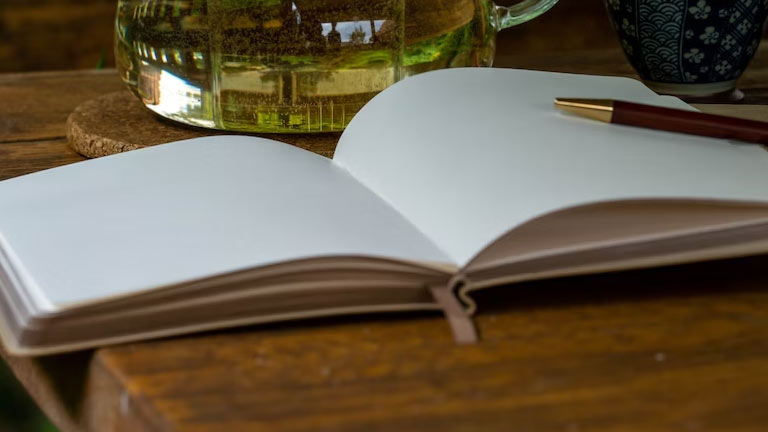
In our increasingly digital world, the tactile experience of flipping through the pages of a well-organized document can be a joyous one. Whether you are a student putting together a research paper, a professional preparing a presentation, or simply someone who enjoys the satisfaction of a neatly arranged set of documents, the art of bringing papers together is a skill worth mastering. In this guide, we’ll delve into the world of paper organization, exploring everything from the tools you will need to the techniques that will make your work shine.
Gathering Your Materials
Before you embark on your paper organizing journey, it is essential to gather the necessary materials. Having everything you need on hand will save you time and make the process smoother.
- Paper: Choose the type and size of paper that suits your needs. For most documents, standard letter-sized (8.5″ x 11″) paper works perfectly. However, for special projects or presentations, consider using larger paper or even high-quality cardstock.
- Printer: If you’re printing your documents, ensure that your printer is in good working order. A high-quality printer can make a significant difference in the final appearance of your papers.
- Binding Supplies: If you plan to use a binding machine, make sure you have the necessary supplies. This includes binding combs, covers, and a binding machine itself. We’ll explore this tool in more detail shortly.
- Hole Punch: A hole punch is handy for documents that will be stored in a binder. Choose a hole punch that aligns with the type of binder you’ll be using.
- Paper Cutter: For precise trimming of pages, a paper cutter is indispensable. It ensures that your document’s edges are neat and uniform.
The Binding Machine: A Powerful Tool
Now, let’s talk about the binding machine. This remarkable device allows you to create professional-looking documents with ease. Whether you are assembling a report, a manual, or a presentation, a binding machine can elevate the quality of your work. It securely binds pages together, providing a polished finish that impresses readers and keeps your documents organized.
When using a binding machine, you’ll need binding combs or spines. These come in various sizes to accommodate different document thicknesses. Simply slide the comb onto the machine, align your pages, and press the binding button. The machine will punch holes along the edge of your pages and then bind them together with the comb. It’s a quick and efficient process that yields impressive results.
Choosing the Right Binding Style
Binding machines offer various binding styles, each with its unique advantages. Here are a few popular options:
- Comb Binding: This style uses plastic combs to hold pages together. It is cost-effective, easy to edit, and ideal for documents that need to lie flat when open.
- Wire Binding: Wire binding provides a sleek and professional look. It is perfect for presentations, reports, and documents that need a more polished appearance.
- Spiral Binding: Also known as coil binding, spiral binding uses plastic or metal coils to secure pages. It allows for easy page-turning and is great for notebooks, manuals, and cookbooks.
- Thermal Binding: Thermal binding uses heat to bind the pages together, creating a clean and professional finish. It is suitable for small to medium-sized documents.
Organizing Your Pages
Once you have your binding machine and supplies ready, it’s time to organize your pages. Here are some tips to ensure your document flows smoothly:
- Page Numbers: Number your pages sequentially. This simple step helps readers navigate your document easily.
- Table of Contents: For longer documents, consider adding a table of contents. It provides an overview of the document’s structure and makes it more user-friendly.
- Dividers: Use dividers with tabs to separate sections within your document. This is especially useful for manuals, reports, and large presentations.
- Headers and Footers: Include headers with the document title and page numbers, as well as footers with your name or the date. Consistency in formatting makes your document look professional.
The Final Touch: Covers and Binding
With your pages organized, it is time to add the finishing touches. Covers not only protect your document but also enhance its visual appeal. There are various cover options to choose from, including clear plastic covers that allow the title page to show through, and thicker cardstock covers that provide durability and a polished appearance.
To complete the binding process, place your pages in the binding machine and attach the comb or spine. Ensure that all pages are aligned properly before binding. Once bound, your document will have a clean, professional finish that’s sure to impress.
Maintenance and Care
To ensure your binding machine continues to function at its best, follow these maintenance tips:
- Regular Cleaning: Clean the machine’s punching mechanism regularly to prevent the build-up of paper dust.
- Proper Storage: Store your binding combs, covers, and other supplies in a cool, dry place to prevent warping or damage.
- Handle with Care: Be gentle when using the binding machine to avoid any damage to its parts.
The art of bringing papers together is a skill that can make a significant difference in the quality and presentation of your work. Whether you’re a student striving for a polished research paper or a professional preparing a presentation that wows your audience, the right tools and techniques can make it happen.
Among the essential tools in your paper organizing arsenal is the binding machine. It’s a versatile device that allows you to create professional-looking documents quickly and efficiently. With various binding styles to choose from, you can select the one that best suits your project’s needs.
So, the next time you have a stack of papers to organize, consider investing in a binding machine and discover the satisfaction of presenting your work in a polished and impressive manner. With the right materials, techniques, and a touch of creativity, you’ll be well on your way to mastering the art of bringing papers together. Happy organizing!




